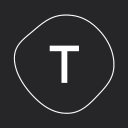Creating A 6-Figure Side Business As A Non-Technical Founder
I’m Wilson Hung and I’m the Director of Growth at Kettle & Fire. On the side, my partners and I created getARPU.com. It’s an app that helps Shopify merchants make more money with “pre-shipping” notification emails by allowing customers to add items to their next order without going through a checkout process. ARPU is used by high growth brands such as Kopari, Perfect Keto, and many others.
I do not know how to code, invested only $10k into the app, and it now generates over 6-figures in annual profits. In some ways, side projects require a better strategy than regular businesses, and this is my story of how we created ARPU even though we all had FT jobs.

What's your backstory and how did you come up with the idea?
I graduated with a Chemical Engineering degree...

Download the report and join our email newsletter packed with business ideas and money-making opportunities, backed by real-life case studies.

Download the report and join our email newsletter packed with business ideas and money-making opportunities, backed by real-life case studies.

Download the report and join our email newsletter packed with business ideas and money-making opportunities, backed by real-life case studies.

Download the report and join our email newsletter packed with business ideas and money-making opportunities, backed by real-life case studies.

Download the report and join our email newsletter packed with business ideas and money-making opportunities, backed by real-life case studies.

Download the report and join our email newsletter packed with business ideas and money-making opportunities, backed by real-life case studies.

Download the report and join our email newsletter packed with business ideas and money-making opportunities, backed by real-life case studies.

Download the report and join our email newsletter packed with business ideas and money-making opportunities, backed by real-life case studies.

















